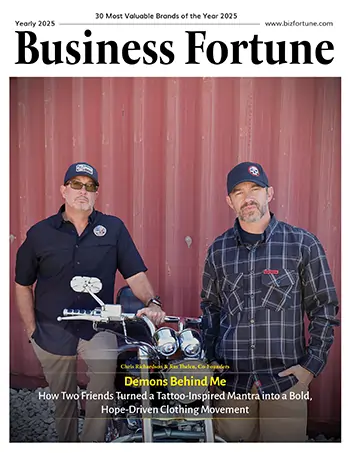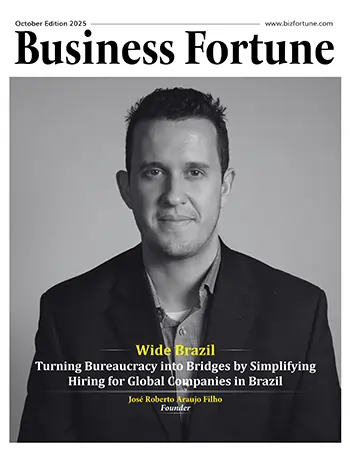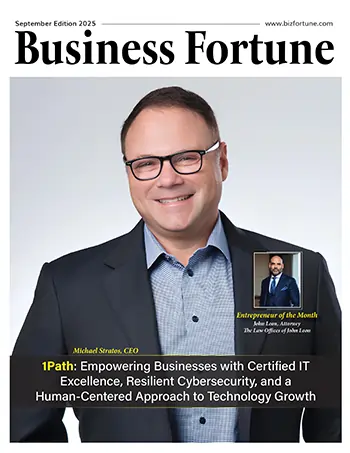Home Industry Fintech and Financial Services The Digital Revolution of Cham...
The Digital Revolution of Chamas: How Technology is Transforming Traditional African Savings Groups into Modern Investment Powerhouses
Fintech and Financial Services

Business Fortune
20 October, 2025
-Jane Wangari Ngugi
Abstract
Across Africa, community savings groups known as Chamas have long provided women with an informal yet effective financial system. Grounded in trust and mutual accountability, these groups support saving, lending, and community development. With the introduction of mobile money, cloud platforms, and automation, Chamas are evolving into structured investment networks. These digital tools are improving transparency, efficiency, and financial participation while allowing women to take on stronger leadership roles. The transformation of Chamas offers practical models for entrepreneurs and financial innovators interested in community-based finance, especially in contexts where formal banking remains inaccessible. This article explores how technology is reshaping Chamas into investment-focused communities that foster long-term financial inclusion and economic empowerment.
Introduction: From Mutual Trust to Structured Finance
In towns and villages across Africa, small groups of women meet regularly to save together, lend to one another, and support each other's economic goals. These gatherings are built on trust, shared purpose, and collective responsibility. Chamas have operated this way for generations, filling the gaps left by traditional banks.[2]
However, limitations like handwritten ledgers, physical cash, and mandatory in-person meetings restrict their growth and introduce inefficiencies. Errors can go unnoticed, funds may be mismanaged, and expansion opportunities may remain out of reach.
The adoption of digital tools is changing this picture. Mobile payments, cloud-based recordkeeping, and simple automation retain the group’s core values while improving speed, accuracy, and organization. Chamas are becoming more than informal savings groups. They are turning into structured, community-led financial systems with real investment potential.[5,6]
1. Digital Tools Enhance Participation and Group Efficiency
1.1 Mobile Banking Expands Access
Mobile money enables members to send contributions, request loans, and make repayments without meeting in person. This option is handy for women balancing domestic and work responsibilities. Digital transactions are automatically recorded, improving accuracy and creating a clear history of financial activity.[7]
.webp)
These records can help groups establish informal credit profiles, access microloans, or open group bank accounts. Removing the need to handle cash reduces risks and adds a layer of security for members.[5,7]
1.2 Real-Time Recordkeeping Builds Trust
With digital platforms, members can track savings, loans, and group expenditures at any time. This shared visibility fosters trust and strengthens accountability. Organized, transparent records also make it easier to approach potential partners or funding sources.[6]
Demonstrating a history of successful group management gives Chamas credibility. It allows them to set strategic goals, manage resources efficiently, and plan for long-term financial growth.
1.3 Automation Streamlines Management
Automated reminders for contributions and loan repayments reduce the administrative load on group leaders. Instead of chasing members for updates, leaders can focus on planning and group strategy. Digital tools that apply rules consistently prevent disputes and ensure fairness.
Standardizing operations allows groups to function more smoothly. Members know what is expected and how the process works, which lowers confusion and conflict.[5]
2. Investment-Focused Features Expand Chama Potential
2.1 Group Investment in Shared Assets
Chamas are increasingly investing in projects that create long-term value. These include farmland, equipment, and joint ventures. Digital tools help track performance, manage earnings, and distribute returns equitably among members.[3]
This shift moves the group beyond short-term savings. Members begin building equity and generating income together. Financial dashboards allow all members to stay informed, contribute to decisions, and monitor outcomes.[10]
2.2 Digital Contracts Improve Security
Digital platforms used by Chamas often include built-in rules that must be followed before transactions can proceed. One of the most important features in many of these systems is member co-guaranteeing of loans. When a member applies for a loan, others in the group may be required to act as guarantors, formally agreeing to repay the loan if the borrower defaults.
This arrangement builds strong internal accountability and reinforces a culture of shared responsibility. Digital contracts make this co-guaranteeing process more transparent by documenting the terms, approvals, and obligations involved. It also increases the group’s ability to manage informal loan collateral without relying on traditional financial institutions.
By clearly outlining expectations and responsibilities, digital tools help enforce Chama rules while preserving the collective oversight that defines these savings groups. Co-guaranteeing not only secures the loan but also motivates members to uphold their commitments and support one another in maintaining group discipline.[10]
2.3 Data Strengthens Risk Management
With access to digital records, Chamas can identify repayment patterns, assess financial behavior, and adjust their policies. They can introduce borrowing limits, refine interest terms, and respond to warning signs before problems escalate.[6}
By better understanding risk, groups can build reserves, improve stability, and grow with greater confidence. Technology turns past behavior into insights that guide future action.[5]
.webp)
3. Women Drive the Digital Transformation of Chamas
3.1 Leadership Through Technology
Women lead the majority of Chamas and are at the center of their digital evolution. They now manage group dashboards, approve transactions, and make strategic decisions using real-time data. With access to new tools, these leaders handle more complex financial roles and guide group investments.
Many of them also train others, spreading digital literacy in their communities. Their leadership now includes both financial strategy and education, reinforcing their influence within and beyond the group.[10]
3.2 Inclusive Platforms Expand Participation
User-friendly digital platforms make it easier for women to participate, even those with limited literacy or technology experience. Features such as voice support and a clear visual design encourage broader involvement.[5,9]
This accessibility builds confidence. Once familiar with digital tools in the Chama setting, many women go on to manage their personal finances more independently. They start businesses, apply for loans, and explore individual investment opportunities with greater assurance.[3]
3.3 Structured Support for Entrepreneurs
Chamas have always supported business ideas among members, but digital systems add structure and clarity. Groups can now review proposals, agree on terms, and track repayment using shared tools.[6,9]
This process keeps everyone involved and accountable. Entrepreneurs receive funding and follow-up, while members continue to monitor progress. The group offers both financial support and shared responsibility.
3.4 Shared Ownership Builds Group Wealth
Groups are pooling resources to invest in shared assets. These may include vehicles, real estate, or farming equipment. Members earn returns based on their contributions, creating a path toward financial security.[3]
Shared ownership promotes long-term planning. Members benefit from the growth of group assets and develop a stronger sense of ownership in the community's success.
.webp)
4. Design Guidelines for Innovators and Developers
As Chamas evolve into structured financial groups, they present a clear opportunity for entrepreneurs and fintech developers. Successful tools should support both the traditional values and the modern needs of these communities. The following principles are key:
1. Ensure Transparency
Every transaction should be transparent and traceable. Members need to see where money comes from and where it goes. This prevents disputes and strengthens group unity.[6]
2. Keep Tools Accessible
Design systems that work on basic mobile phones and in low-bandwidth areas. Use simple instructions and support multiple languages to make participation easier.[7]
3. Reflect Group Decision-Making
Features should allow shared planning, approvals, and permissions. The design should match the leadership roles already present in most Chamas.[5]
4. Include Investment Features
Chamas are no longer just saving. They are tracking returns, managing group assets, and planning for the long term. Tools should reflect this shift.[3,8]
5. Plan for Growth
Chamas change in size, scope, and ambition. Flexible systems can support small informal groups and larger, more structured cooperatives alike.[1]
Conclusion
Chamas are shifting from informal savings circles into organized, investment-ready communities. Mobile money, digital recordkeeping, and automated tools are improving how these groups operate. They now support not only savings but entrepreneurship, shared investment, and financial planning.[1,2]
Women are central to this transformation. They manage digital tools, lead financial strategy, and educate others. With stronger systems and better information, Chamas are building financial autonomy for their members and setting a model for inclusive, community-based finance.[2,5]
For innovators and financial leaders, the rise of digital Chamas offers more than a case study. It presents a working model of how technology can strengthen trust, expand opportunity, and support grassroots economic development. These groups are creating real value, one contribution and one decision at a time.[1,3,4,9]
.webp)
About the Author
Jane Wangari Ngugi is an entrepreneur and innovation strategist with over 15 years of experience in business leadership, digital transformation, and community finance. She is the CEO of Caterpillar to Butterfly Entrepreneurship LLC and a doctoral researcher in Corporate Innovation and Entrepreneurship. Jane is passionate about empowering women through technology-driven financial inclusion and sustainable enterprise development.
References:
-
Asamani, G. (June 2025). Solutions igniting Africa’s digital revolution: Insights from Unstoppable Africa. UN Global Compact. https://gabi.unglobalcompact.org/features/solutions-igniting-africas-digital-revolution-insights-unstoppable-africa
-
Chutel, L., & Dahir, A. L. (July 2022). Africa’s ancient financial practices are being digitized for the future. Quartz Africa. https://qz.com/africa/1392527/africas-ancient-practices-are-being-digitized-for-the-future
-
Coke-Hamilton, P. (April 2025). 22 billion reasons for Africa to invest in digital. Africa Renewal. https://africarenewal.un.org/en/magazine/22-billion-reasons-africa-invest-digital
-
Draper, R. (December 2017). Africa’s technology revolution. National Geographic. https://www.nationalgeographic.com/magazine/article/africa-technology-revolution
-
Gopala Krishna. (July 2025). How Chama management systems foster financial inclusion. Modefin. https://modefin.com/how-chama-management-systems-fosters-financial-inclusion/
-
Gubbins, P. (December 2019). The potential for inclusive finance in Kenya: A vision paper. FSD Kenya. https://www.fsdkenya.org/wp-content/uploads/2019/12/Vision-Paper-P.Gubbins-Jan2020.pdf
-
Koblanck, A. (May 2018). Digital access: The future of financial inclusion in Africa. International Finance Corporation (IFC). https://www.ifc.org/content/dam/ifc/doc/mgrt/201805-digital-access-the-future-of-financial-inclusion-in-africa-v1.pdf
-
Moyo, C., & Asafu-Adjaye, B. (May 2025). Driving a sustainable digital revolution for Africa’s tomorrow. Absa Group. https://cib.absa.africa/home/insights-and-events/driving-a-sustainable-digital-revolution-for-africas-tomorrow/
-
Obonyo, E., & Sydow, A. (October 2024). Financial inclusion: African financing models are showing the way. World Economic Forum. https://www.weforum.org/stories/2024/10/financial-inclusion-african-financing-models/
-
Shaila, A. (June 2021). How Chamas and mutual credit are changing Africa. Low Impact. https://www.lowimpact.org/posts/how-chamas-mutual-credit-changing-africa/


































